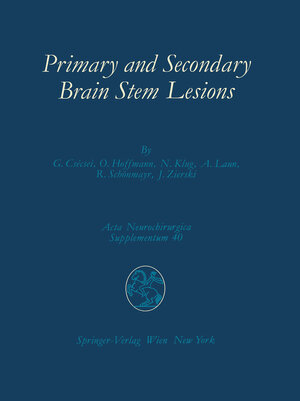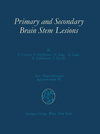
×
![Buchcover ISBN 9783709189412]()
Inhaltsverzeichnis
- Cerebral Mass Displacements. Part I: Cisternal Hernia in Intracranial Tumours in the Computer Tomogram.
- Materials and Methods.
- Results.
- Influence of Tumour Location on Alterations of the Cisterns.
- 1. Tumours of the Frontal Lobe.
- 2. Tumours of the Temporal Lobe.
- 3. Tumours of the Parietal Lobe.
- 4. Tumours of the Occipital Lobe.
- 5. Tumours of the Basal Ganglia.
- 6. Tumours of the Posterior Cranial Fossa.
- 7. Occlusive Hydrocephalus.
- Discussion.
- References.
- Cerebral Mass Displacements. Part II: Clinical Findings in Primary and Secondary Brain Stem Lesions.
- Patients and Methods.
- 1. Individual Parameters and Their Combinations.
- 2. Progress Investigations.
- 3. Summary.
- Acute Direct and Indirect Lesions of the Brain Stem — CT Findings and Their Clinical Evaluation.
- Summary.
- Material and Methods.
- 1. Supratentorial Lesions.
- 2. Infratentorial Lesions.
- 3. Direct Changes in the Brain Stem.
- 4. Indirect Secondary Infarcts of the Brain Stem and Other Regions.
- Discussion of the Indirect Secondary Infarcts.
- Electrically Elicited Blink Reflex and Early Acoustic Evoked Potentials in Circumscribed and Diffuse Brain Stem Lesions.
- 1. Introduction and Objectives.
- 2. Historical Review.
- 3. Materials and Methods.
- 4. Results.
- 5. Summary.
- Blood Flow in Brain Structures During Increased ICP.
- 1. Blood Flow Measurement.
- 2. Experimental Protocol.
- 1. Control Values.
- 2. Effect of ICP upon Systemic Measurements.
- 3. Macroscopic Changes.
- 4. rCBF in the Initial Phase of ICP Increase.
- 5. Effect of ICP upon Regional CBF.
- 6. Influence of ABP.
- Acknowledgements.
- Biomathematics of Intracranial CSF and Haemodynamics. Simulation andAnalysis with the Aid of a Mathematical Model.
- Model Equations.
- 1. Intracranial System.
- 2. Cardiovascular Components.
- 3. Baroreceptor Feedback Control.
- 4. Disturbance of Central Regulation.
- 5. Space Occupying Lesions.
- Stability, Model Validation and Simulation Technique.
- Model Applications.
- 1. Intracranial Pulse Pressure Relationship and Haemodynamics.
- 2. Volume Pressure Test and Haemodynamics.
- 3. Parameter Estimation.
- 4. Rhythmic Phenomena.



